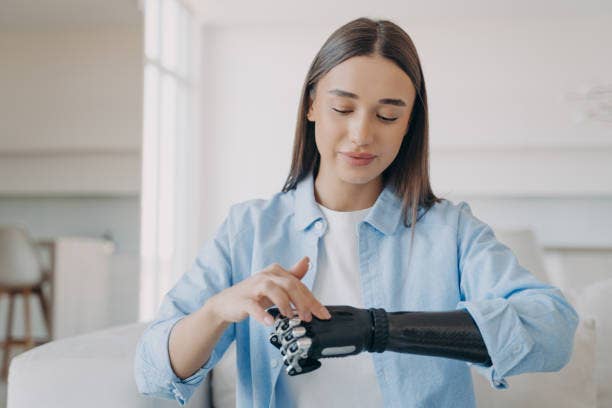First-ever mobile app developed to cure tinnitus
After two decades of searching for a cure for tinnitus researchers announced promising results from a trial of a new app-based therapy.

[Mar. 18, 2023: JD Shavit, The Brighter Side of News]
After two decades of searching for a cure for tinnitus, researchers at the University of Auckland have announced promising results from a clinical trial of a new mobile-phone-based therapy. (CREDIT: Creative Commons)
After two decades of searching for a cure for tinnitus, researchers at the University of Auckland have announced promising results from a clinical trial of a new mobile-phone-based therapy. The study randomized 61 patients to either the prototype of the new ‘digital polytherapeutic’ or a popular self-help app producing white noise.
According to the study published in Frontiers in Neurology, the group with the polytherapeutic treatment (31 people) showed clinically significant improvements at 12 weeks, while the other group (30 people) did not. These encouraging results have excited researchers who believe that this breakthrough could have a direct impact on the future treatment of tinnitus.
Tinnitus is a condition that affects approximately 15 percent of the population, with around 1 percent experiencing severe symptoms that impact their quality of life. The condition is characterized by a persistent ringing, buzzing, or humming sound in the ears, which can be incredibly distressing and challenging to manage. Currently, there is no known cure for tinnitus, and treatments are limited to managing the symptoms.
For the past two decades, researchers around the world have been searching for a cure for tinnitus, with limited success. However, the recent clinical trial at the University of Auckland has provided new hope for those suffering from the condition.
Related News
The study was led by Associate Professor in Audiology Grant Searchfield, who has been researching tinnitus for more than 20 years. According to Professor Searchfield, the trial was designed to test a new mobile-phone-based therapy that is designed to address multiple factors that contribute to the condition.
“What this therapy does is essentially rewire the brain in a way that de-emphasises the sound of the tinnitus to a background noise that has no meaning or relevance to the listener,” Dr Searchfield says.
According to audiology research fellow Dr Phil Sanders, “Sixty-five percent of participants reported an improvement. For some people, it was life-changing - where tinnitus was taking over their lives and attention.”
The prototype of the new ‘digital polytherapeutic’ is a comprehensive therapy that combines a range of treatments, including cognitive-behavioral therapy, sound therapy, and mindfulness techniques. The therapy is delivered via a mobile app and can be customized to meet the specific needs of each individual patient.
Example screenshots for (A) the USL intervention (i) Menu, (ii) Passive therapy sounds, (iii) AOIL task, (iv) Tracking task. (B) The WN intervention. (i) Menu, (ii) Passive therapy sounds, (iii) Sound control, (iv) Sound mixing. (CREDIT: University of Auckland)
To test the effectiveness of the therapy, the research team conducted a randomized controlled trial, in which 61 patients with tinnitus were randomized to either the polytherapeutic treatment or a popular self-help app producing white noise. The participants were assessed at 4, 8, and 12 weeks after starting the treatment.
The results of the study were very encouraging. The group with the polytherapeutic treatment showed clinically significant improvements at 12 weeks, while the other group did not. The improvements included a reduction in the severity of tinnitus, as well as improvements in mental health and quality of life.
Associate Professor Grant Searchfield says this is a treatment made possible by recent technology developments. (CREDIT: University of Auckland)
“This is more significant than some of our earlier work and is likely to have a direct impact on future treatment of tinnitus,” said Associate Professor in Audiology Grant Searchfield.
The study is a significant step forward in the search for a cure for tinnitus. Currently, the only treatments available are designed to manage the symptoms of the condition, rather than address the underlying causes. However, the new mobile-phone-based therapy shows promise as a comprehensive treatment that can address multiple factors that contribute to tinnitus.
According to Professor Searchfield, the new therapy has the potential to be a game-changer for the treatment of tinnitus. “We believe that this treatment has the potential to be transformative for people suffering from tinnitus,” he said. “It is a comprehensive therapy that can address multiple factors that contribute to the condition, and it is delivered via a mobile app, making it accessible to anyone, anywhere.”
The study has generated excitement among the medical community, and many are optimistic that the new therapy could provide a much-needed breakthrough in the treatment of tinnitus.
The study was supported by the University of Auckland and Tinnitracks, a German company that specializes in digital therapeutics for tinnitus. Tinnitracks developed the Tinniwell platform used in the study, which is based on their existing Tinnitracks therapy, but with additional features and enhancements for the New Zealand market.
Dr. Searchfield said that the next step is to conduct a larger, multi-center trial to confirm the effectiveness of the digital polytherapeutic for tinnitus. “We want to see if these results can be replicated in a larger population, and if there are any long-term effects of the therapy,” he said. “We also want to explore the potential of combining the digital therapy with other approaches, such as medication or cognitive behavioral therapy, to see if we can improve outcomes even further.”
Note: Materials provided above by The Brighter Side of News. Content may be edited for style and length.
Like these kind of feel good stories? Get the Brighter Side of News' newsletter.



